-

Perinatal deaths at new low
13 June 2017Reduced smoking and fewer teenage mothers may have helped contribute to the lowest perinatal death rate since reporting began in 2007.
-

New health-focused targets
12 June 2017The government has switched its health-focused "Better Public Services" targets away from rheumatic fever and immunisation rates to broader antenatal and avoiding child hospitalisation targets.
-

Nurses make mark on rheumatic fever rates
9 March 2017World first research showing sore throat clinics in South Auckland schools helped dramatically drop rheumatic fever rates justifies the hard work put in by nurses and whānau workers, says nurse leader and co-researcher Lizzie Farrell.
-

Flu vaccine during pregnancy study adds to evidence
1 March 2017A new study of Australian woman getting the flu vaccine while pregnant has added to the safety evidence of immunisation during pregnancy.
-

Return-to-school asthma spike warning
25 January 2017With kids about to return to school, the Asthma and Respiratory Foundation NZ is calling for preventive action to reduce the annual spike in asthma hospitalisations.
-

Safe sleep: ask the uncomfortable questions
3 December 2015Safe Sleep Day is on December 4 to help ensure babies sleep safely this summer. A safe sleeping advisor tells Nursing Review that nurses often have special opportunities to ask the questions that can make a difference to vulnerable families.
-

Clowning around on the ward
7 April 2014CAMERON TAYLOR of Clown Doctors shares while a smile is good medicine on the ward as April 7 is New Zealand Smile Day.
-

Positive feedback sees Greens widen ‘nurses in schools’ policy
4 February 2014$40 million of the Green’s proposed $100 million School Hub policy is earmarked for nursing services in primary schools.
-
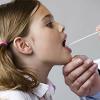
Student nurses measuring impact of new school clinics
5 June 2014Five student nurses joined a research team going back into three South Auckland schools to measure the impact of regular classroom visits focusing on sore throats and skin infections.
-

Child & youth health are Budget winners but little for aged care
15 May 2014The promise of free prescriptions and GP visits for pre-teens next year is being cautiously welcomed by the health sector but other sectors have leaner pickings.
-

"NitBusters" to alleviate pressure on public health nurses
8 May 2014New "NitBuster" teams will help alleviate pressure on hard-pressed public health nurses in schools allowing them to concentrate on more serious health issues, says Julie Chapman of KidsCan.
-

Let’s stop children falling through the cracks
30 October 2014The country's first child and youth NP, PAULA RENOUF, says a decade on, some things have improved but still too many children are falling through the cracks.
-

Nursing Survey: what DO you do everyday?
2 October 2014Nurses nationwide are invited to take part in a major online survey hoping to pinpoint the real differences between a staff nurse and a specialist nurse’s daily work.
April 2017 VOL. 15 (2)
-
Natural diversity: understanding and supporting intersex people
Not all people are ‘typical’ males or females. Nurse educator CRAIG WATERWORTH is keen to raise awareness amongst nurses about intersex people so they can be better supported.
October 2016 Vol. 16 (5)
-
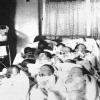
Antibiotic resistance: nursing stories of before & after antibiotics
NURSING REVIEW talked to nurse researchers and an infection control nurse specialist who share stories of fighting infection before antibiotics, the 'H-bug' epidemic of the 50s and today.
-
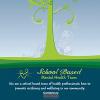
Helping kids take a deep breath
Simple activities developed to help teachers calm anxious kids in post-quake Canterbury are soon to be shared more widely to help nurses, parents and teachers boost child wellbeing around the country. Nursing Review talks to mental health nurse MICHELLE COLE to find out more.
-

Kiwi kids: growing up or growing out?
A new national health target is underway on screening and referring obese four-year-olds. FIONA CASSIE finds out more and whether this is enough to help curtail the 10 per cent of Kiwi kids who are now clinically obese – fat to the point that their health is likely to be at risk.
-

Childhood obesity: empathy not judgement
Nursing Review reports that nurses need to put away their own prejudices or guilt about weight and start conversations that will help families find a healthy way forward.
-

HPV vaccinations: Don't forget the boys
From January 2017 both boys and girls will be offered free vaccine protection against human papillomavirus (HPV), which causes genital warts, cervical and some other cancers.
-

Chickenpox joins Kiwi child immunisation schedule
Chickenpox, the last of the common vaccine-preventable childhood diseases, is to be added to the free childhood immunisation schedule from 1 July next year. NURSING REVIEW finds out more.
-

History of NZ's Childhood Immunisation Schedule
With New Zealand just about to add another vaccine to its childhood immunisation schedule Nursing Review looks back at other major milestones in the 75 years or so since the first routine vaccinations were offered to Kiwi children.
-

Something in the water
Hawke’s Bay nurses were recently tested when Havelock North was hit by what’s believed to be the country’s worst ever waterborne disease outbreak – more than 5,000 people brought down with gastric illness. FIONA CASSIE shares the stories of some of the nurses involved and some of the lessons they learned.
August 2016 Vol. 16 (4)
-

Career path: Plunket educator
Seeing vulnerable children and stressed families on the paediatric ward gave ANNE HODREN the drive to nurse in the community to improve child health through prevention and early detection.
-

Career Path: clinical nurse coordinator
LEAHA NORTH knew when she was a girl playing hospital with her dolls that she wanted to work with children. After returning from a lengthy OE mostly spent paediatric nursing, she is also keen to work on reducing Māori health inequalities.
April 2016 Vol 16 (2)
-

Safe relationships: an app for young people
PROFESSOR JANE KOZIOL-McLAIN, a longstanding researcher into family violence, is leading a research team currently working with young people to develop a ‘healthy relationships’ smartphone app to be piloted in schools next year.
December 2015 Vol 15 (6)
-

Safe sleep: ask the uncomfortable questions
A safe sleeping advisor tells Nursing Review that nurses often have special opportunities to ask the questions that can make a difference to vulnerable families.
October 2015 Vol 15 (5)
-

Poor child health and housing: what’s being done?
Thousands of children turn up each year in hospitals with respiratory and skin conditions. Many of them return to damp, cold or overcrowded houses that further aggravate or caused the conditions in the first place. FIONA CASSIE talks to two nurses whose focus is working with families to prevent the adverse effects of sub-standard housing on child health.
-
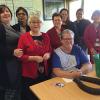
Housing stories from the frontline in South Auckland
Kidz First public health nurses see the reality of how Auckland’s housing crisis impacts on often struggling families. Seven nurses and their clinical nurse manager Lizzie Farrell share stories of some of the families they work and walk alongside.
-

Housing research: cold rooms have high health costs
Housing researcher NEVIL PIERSE talks to Nursing Review about getting the hard statistics and evidence to back healthy housing initiatives.
-

Childhood immunisation: don’t forget the dads
Nursing Review talks to paediatrician Cameron Grant about some of the take-home messages around childhood immunisation in the longitudinal Growing Up in New Zealand study.
-

Childhood asthma: the inhaler that moos and miaows
Research on a ‘smart inhaler’ that moos, miaows or rings out pop tunes and makes kids with asthma use their preventer more often won young hospital pharmacist Amy Chan the recent Medicines New Zealand 2015 Value of Medicines award.
-

One-stop-shop for books, coffee and child health
Rotorua is well on the way to having a New Zealand-first – if not a world-first – combination of a child health hub and a public library. FIONA CASSIE talks to Gary Lees, the director of nursing for Lakes District Health Board to find out more.
June 2015 Vol 15 (3)
-

A day in the life of an iwi provider recent graduate nurse
Follow a day in the life of recent graduate nurses Courtney Fermanis from early morning crossfit to door-knocking as an outreach immunisation nurse for her iwi.
-
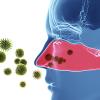
Asthma or COPD stop and rethink?
That patient with the persistent cough or wheeze may be mislabelled asthmatic. And that COPD patient prescribed a steroid inhaler may only be increasing their risk of pneumonia. Nursing Review talks to respiratory physician associate professor Jeff Garrett about misdiagnoses and misclassifications that can result in misprescribing for some airway disorders.
April 2015 Vol 15 (2)
-

Nurses Day 'hero': Hawke's Bay anti-family violence champion
*Blanket screening for family violence in primary health is the dream of family violence intervention champion Debs Higgins of Hastings Health Centre.*
-
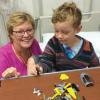
Nurses Day 'hero': helping families navigate child cancer
Canterbury's paediatric oncology NP Jan Millar helps families keep their heads above water while they are being swept along by the turbulent current that is child cancer.
-
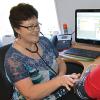
Nurses Day 'hero': Gentle NP helps clients facing tough life
’Tough customers’ are now turning up for appointments more and more often since primary health care NP Jane Dutton joined Whanganui’s Castlecliff Health nearly six months ago.
-
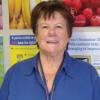
Nurses Day 'hero': Five decades of nursing
Rotorua nurse Bev Gray is retiring after 50 years of nursing including setting up the city's first coronary ICU to public health nursing and says, given the chance, she would choose nursing all over again.
-

Nurses Day 'hero': Teen mum turned RN making a difference
The mother of two children by the age of 17, Uputaua Suniula is now a nurse helping to turn around the health of teenagers and children in Porirua.
-

Nurses Day 'hero': nursing in a caravan park
Anne Sisam is a public health nurse hero working with vulnerable families in a caravan park in West Auckland to empower them to keep healthy.
-

Nursing procedures - a one-stop online shop for half the country
Keeping nursing procedures up to date can be a tedious and neverending task. For the past three years, however, the five Midland region DHBs have been using a ‘Kiwified’ online nursing procedure service that is shortly to go live across the South Island. FIONA CASSIE finds out more.
February 2015 Vol 15 (1)
-

Day in the life of a ... clown doctor
Zack McCracken was a nurse for 15 years before she left to pursue her love of acting. Now she combines her passion for theatre and healthcare by working as a clown doctor.
-
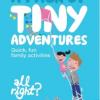
Free app for fun times with kids
A toolkit of quick, fun activities for kids first developed to help quake-stressed parents is now a free smartphone app available across the country.
-

Keeping leakage at bay
Is one-off advice on pelvic floor exercises enough to keep urinary incontinence at bay? This edition’s critically appraised topic (CAT) looks at whether pelvic floor muscle training makes a difference.
October 2014 Vol 14 (5)
-

Youth services making a difference on a shoestring
Young people walking through the door of Youth One Stop Shops around the country are offered a holistic, wraparound service that many nurses aspire to. FIONA CASSIE learns that it comes at the cost of a continuous funding struggle to keep the – often nurse-led – youth health services running.
-

New youth health nursing framework
Better meeting the health needs of young people is a major aim of a new nursing framework. FIONA CASSIE finds out more about the National Youth Health Nursing Knowledge and Skills Framework, which outlines the essential skills all nurses should have, as well as those specialising in working with youth.
-

A day in the life of a ... school nurse
Heather Laxon's job as a school nurse at Mangere College is a lot more complicated than the stereotype of patching scraped knees. Read on to discover the complexities the modern school nurses faces.
-

Helping children survive and thrive
FIONA CASSIE talks to nursing leader and Children's Team member Sonia Rapana about her role in the Children's Team initiative to help children not only survive but also thrive.
May 2014 Vol 14 (2)
-

Clowning around on the ward
CAMERON TAYLOR of Clown Doctors shares why a smile is good medicine on the ward - for nurses and patients.
November 2013 Vol 13 (7)
-

Letter from the Editor
Vulnerability is a common thread through many articles in Nursing Review this edition.
-
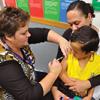
A day in the life of a B4 School Check Coordinator
Janine Spence's day begins early, very early, huddled in a blanket studying for her Masters degree before her children wake. Her working day is filled with children and families as co-ordinator of B4 School Checks and outreach immunisation for mostly vulnerable families without their own GP.
-

Nurses in the playground
The first public health nurses went into primary schools in the 1920s and still work there today. How many, and how much time this often stretched-thin workforce can spend in schools, were talking points in parliament this year. FIONA CASSIE finds out more about the debate and new initiatives for nurses in primary schools from Kaitaia to Aranui.
-
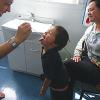
Nurses in Schools: The MOKO project
The MOKO project: from itchy kutu-infested head to playground advocate
-

Nurses in Schools: the Mana Clinic
Mana Clinic: the way it could and should be?
-

Nurses in Schools: Aranui Neighbourhood Nurse
Aranui Neighbourhood Nurse: Kids open the doors to families in need
-

Vaccinated against whooping cough yet?
More than 150 children have been hospitalised this year with pertussis (whooping cough) and three babies in all have died since the outbreak began in August 2011. TRISH WELLS-MORRIS, education facilitator for the Immunisation Advisory Centre* puts the argument for all those caring for infants – be it as nurses, parents, or grandparents – to be immunised against the disease.
-

Child & Youth Health: Case Studies
Being at the right place and right time is the focus of our child & youth health stories this edition. We look at nurses working in the playgrounds and classrooms of high needs primary school communities and working alongside young adults with type 1 diabetes on a university campus.
September 2013 Vol 13 (6)
-

Career paths: the short, sweet, and roundabout
We look to nurses as learners, educators, and leaders in this edition. Read on about teaching fledgling nurses in the classroom and on the ward, fostering leadership skills, nurses sharing their career tales, and milestones past and future in the recognition of competence and professional development.
-

Baby hopes and vitamins
CLINICALLY APPRAISED TOPIC (CAT): Does taking vitamin supplements help women with fertility problems?
July 2013 Vol 13 (5)
-

Keeping kids safer
CLINICALLY APPRAISED TOPIC (CAT): What nursing-led intervention has been proven to help protect vulnerable Kiwi children?
April 2013 Vol 13 (4)
-

Pioneer prescriber looks back
Paula Renouf became the country’s first nurse prescriber in June 2003. Nursing Review caught up with her on travelling sabbatical in the United States’ Pacific North West and asked her to reflect back on the decade that’s followed.
-

Advising on OTC medicines
One issue that prescribing reform will hopefully improve is the current grey area over when a nurse is ‘advising’ or ‘prescribing’ an over-the-counter (OTC) medicine like paracetamol.
-

International Nurses Day Heroes
To celebrate International Nurses Day this year Nursing Review invited district health boards across the country to contribute stories on nursing ‘heroes’ in their region. We got stories back on just some of the unsung, innovative, compassionate, high achievers and dedicated nurses that make up the New Zealand nursing workforce.
-
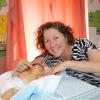
A day in the life... Of a public hospital CNS/RN first surgical assistant
We look at a day in the life of Sue Glover - one of the country's new Registered Nurse First Surgical Assistants working with mostly children before, during and after their heart surgery.
December 2012
-

Tide change for Waves
Taranaki’s Waves youth health service is still seeking to re-open but its founding nurse practitioner Lou Roebuck is seeking a fresh start.
-

A day in the life... of a PLUNKET NURSE
Plunket Nurse Maria Browne's day starts with waking three teenagers before heading off on the bumpy roads of post-quake Christchurch. Read on to find out more...
-

Child protection: being safe not sorry: training to protect...
The White Paper for Vulnerable Children was a major new policy plank for 2012 and training all ‘front line professionals’ in detecting child abuse and neglect is one of its key aims. FIONA CASSIE finds out more about why child protection training is important for nurses.
November 2012
-

Child Protection White Paper: nurses and resources missing in action
Nursing leaders are concerned at the failure to mention nursing or to address poverty and resource issues in the Government’s new Children’s Action Plan.
-

Youth Health: WAVES crash through funding crisis
Youth health NP LOU ROEBUCK and Professor JENNY CARRYER, patron of youth one-stop shop, WAVES, ask why a popular health service helping thousands of young people can’t get funding.
September 2012
-

The sore throat that can break hearts
Just a sore throat … too many families now know some sore throats last a lifetime. FIONA CASSIE talks with some of the passionate pioneers of school throat-swabbing campaigns as the national Rheumatic Fever Prevention programme rolls out.
-

Third world rheumatic fever stats shock nurse into action
*Wielding a big needle once a month doesn’t make Sandra Ball many friends with her young rheumatic fever patients.*
-

South Auckland pioneering new school clinic model
*It was in South Auckland that school-based sore throat clinics were first trialled in New Zealand.*
-

Nursing: no greater calling
Sharon Myoji Schnare, a United States-based family and women’s health nurse practitioner addressed the recent primary health care nurses' conference* about the brave new world opening up to nursing.
July 2012
-

A day in the life... OF A FAMILY PLANNING NURSE
Sue Schroder walks to work knowing her twin pre-schoolers are in her husband's good hands. She then sets to work with the mostly young women clientele providing information and support on contraception to STIs...
March 2012
-

Nurses' quit smoking stories
*Nurses' share their own stories about the battle to quit smoking*
October 2011
-
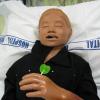
Starship simulation – high fidelity and child actors
A busload of kids draped in bandages hop and stumble into Starship, some crying, some not. And probably some giggling, as the “injured” are not accident victims but students of a local school roleplaying to test Starship emergency department’s contingency plans.
September 2011
-

Protecting our children is everyone’s business
Following the recent release of the green paper on vulnerable children, nurse practitioner ANGELA BATES and PROFESSOR JENNY CARRYER look at the role of nursing in child protection.
July 2010
-

Iodine for pregnant women
From July 1 the Ministry of Health has added iodine as a recommended supplement for pregnant and breastfeeding women, with subsidised tablets available. Dr Pat Tuohy, the ministry’s chief advisor on child and youth health says: “Pregnant and breastfeeding women have increased iodine requirements and in spite of a good diet and mandatory fortification of bread with iodised salt (introduced late 2009) they remain at risk of inadequate iodine intakes. Not enough iodine can result in impaired brain function and impaired growth and development in the unborn baby and young infant. Drug-buying agency PHARMAC is now subsidising a New Zealand-made iodine tablet providing the recommended 150mcg daily dose, which can be prescribed or bought over the counter at pharmacies. Iodine deficiency problems in New Zealand lead to table salt being iodised in 1924 and the level increased in 1938, but the ministry says recent research indicated further intervention was needed to stop iodine deficiency disorders from once again widely affecting the New Zealand population. The re-emergence of iodine deficiency is thought to be due to increased consumption of commercially prepared food mostly made with non-iodised salt, the declining use of iodine sanitisers by the dairy industry and generally reduced salt intakes.
-

Nurse practitioners: changing the landscape of health care delivery
Youth health NPs GILL ALCORN and REBECCA ZONNEVELD report back on the work of nurse-managed health centres in the US.
June 2010
-

A job in a thousand
Six-month-old Brian Shortland (with the help of dad Richard Shortland) receiving the 1000th vaccination from Kim Hunter.
-

Plunket 'Book' to go high-tech
Plunket nurses are to replace pen and paper with a new high-tech IT system that could enable parents to update a child’s file online.
-

Vaccination prevents HPV infection long term
This month’s clinically appraised topic looks at a major study’s findings into the long-term effectiveness of the HPV vaccine
February 2010
-

Back to school
As schools go back this month so will public health nurses as they start the second year of a cervical cancer vaccine “catch-up” programme in schools. FIONA CASSIE finds out more










